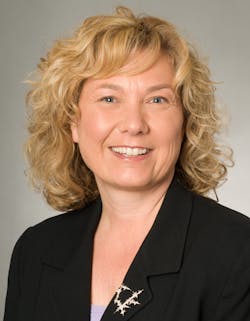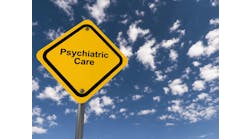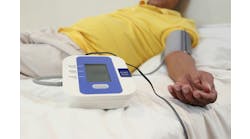Hospitals find FRED (Frantically Running Every Day) among their staff for many reasons. I’ve talked about a few on the blog already, such as:
- Lack of time to recover from stressful events
- Concerns about safety due to threats and violence in the workplace
- Perceptions of inadequate or unsafe staffing levels
All of these issues were identified by the Nursing Executive Council in a recent report on supporting a resilient workforce. The NEC also observed a fourth factor: Feeling isolated in a crowd. The report suggested many causes for this feeling of isolation, including heavy responsibilities, new care protocols, decentralized nursing stations, and private patient rooms.
One other reason for that FRED feeling caught my eye: New technology. As an advocate for the power of technology to improve healthcare workflow and patient care, I believe users can and should experience technology as a clear net positive.
Challenges and benefits of healthcare communication technology
Healthcare technology sometimes gets a bad rap. Both doctors and patients expressed frustration1 with the move to EMRs, most notably when laborious data entry appeared to interfere with human conversation. Alarm fatigue2 has been a genuine safety concern in some hospitals.
Nevertheless, those technologies are here to stay, and with good reason. EMRs allow clinicians to share information quickly and easily, and can help patients access their own healthcare data. Alarms can provide early warnings to healthcare providers, protecting the health and safety of patients. In Healthcare Moment: Enhance Care Team Effectiveness by Eliminating ‘Toil’, Gartner analyst Barry Runyon wrote, “By 2022, 50% of the unnecessary toil embedded in nursing and care team workflows will be reduced or eliminated through targeted automation, artificial intelligence, and analytics.”
Healthcare organizations that want to capitalize on these gains in productivity and care outcomes without increasing nurses’ sense of isolation will need to employ technology in a way that builds a sense of connection.
Best practices for healthcare communication technology
Technology that can be learned quickly, used easily and customized individually will offer more convenience than inconvenience. Using technology that enables these best practices can foster a sense of connection, teamwork, and collaboration.
- Use two-way communication
Traditional hospital communication has often been unidirectional. Calling codes on the PA system or contacting an individual via pager may not bring needed assistance on the first try, which increases anxiety in addition to delaying patient care. A communication platform that provides responsiveness and accountability along with speed can ameliorate both staff distress and complications or dissatisfaction from preventable waits.
Consider the example of a nurse paging a physician. With traditional paging, if the physician does not respond, there’s no way of knowing whether or not the physician has received the page. A more complete communication platform can track the message, receipt, and response. That benefits the nurse, who knows whether to send a page again or contact an alternate physician. The recordkeeping function supports greater accountability for hospital operations as a whole. A two-way communication tool with preset options allows physicians to confirm receipt and availability almost instantly, with minimal effort. As a result, nurses receive quick assurance that support is on the way.
- Make connections easy
Technology that is unfamiliar is technology that will not be used. While frontline nurses have sometimes been charged with resistance to new technologies3, the reality is that nurses are always adapting to new patient demands, new regulations, and new treatments. Technology that adds value or streamlines labor without disrupting established workflow will be much more readily adopted. Tech that takes weeks to learn or distracts from patient care may lead to user workarounds and frustration.
When it comes to communication technology, choice, convenience and flexibility facilitate both implementation and adoption. A multi-modal solution allows users to communicate using technologies they already know, including email, page, fax, voice, or text, from any smartphone, tablet, laptop, or desktop. A communication platform specifically designed for healthcare environments is also easily adaptable to nursing needs.
- Foster collaboration with clinical communication and collaboration tools
Two-way communication can go a long way in helping healthcare teams work together more effectively. True collaboration, however, requires empowering each staff member to work at the top of his or her license, so every necessary role is filled by the person best suited to do it and decisions are made with all relevant input.
Healthcare communication technology designed to optimize hospital operations can foster this goal in several ways. Nurse supervisors and staffing coordinators can use shift management tools to confirm that each shift has the right mix of skills and certifications. Pre-set messaging and pre-defined cross-disciplinary contact groups make it easier to assemble the appropriate teams for particular codes, such as teams for rapid response, sepsis, transplant, or behavioral emergency. When repetitive elements of healthcare communication and recordkeeping can be automated or accomplished with one touch, nurses can spend their time performing the care-related tasks for which they are uniquely trained.
- Mobilize the right resources
Care coordination has become increasingly complex in modern healthcare facilities. Patients tend to be older, taking more medications, and suffering from chronic conditions that will not be resolved during a hospital stay. These factors have made admission, treatment, and discharge more complicated than ever before.
This can be especially true in the emergency department (ED), where patients can run the gamut from trauma victims to repeat visitors lacking access to regular care. ED nurses are called upon to prioritize not only patients, but also lab results, beds, transportation, and hospital admissions. Using communication tools to share information from EMS with the ED helps nurses prepare appropriately, eliminating a frantic rush when a patient arrives. Nurses in the ED or other departments can also use mobile communication devices to ensure that they have adequate supplies if there is a sudden surge, without leaving their posts. Likewise, when it is time for discharge, a mobile communication device allows nurses to call housekeeping, transportation, and other needed services without roaming the hospital.
- Ensure ongoing support
The best technology can feel like a burden if it isn’t working properly. Many patients have seen a nurse gamely trying to get a response from a recalcitrant computer. When it comes to providing communication in a healthcare setting, however, consistency is essential. A cloud-based platform can provide the security and redundancy to assure that communications are always available. Support that’s on call 24/7/365 assures help is there whenever it is needed.
The crucial ingredient: Joy in practice
The NEC concluded their report on building a foundation for nursing resilience with the reminder that creating small opportunities for joy in practice can make a big difference. One of the methods they suggest is using humor throughout the day, to increase creativity and cohesion while reducing burnout and absenteeism.
We made FRED into the leading man of this blog series to add a little humor to a discussion of serious topics: Nursing stress and nursing resilience. One of the most important lessons leaders in both healthcare and healthcare technology can take away from FRED is that nurses don’t just need tools to work smarter or do more with less. They need tools that will help them feel more confident and more connected to other members of the care team, so they can kick FRED to the curb and keep their focus on giving top quality patient care.
References
- Watcher, Robert M., “Why Health Care Tech is Still So Bad,” New York Times, 22 March 2015, https://www.nytimes.com/2015/03/22/opinion/sunday/why-health-care-tech-is-still-so-bad.html
- Ensslin, Peggy A., “Do You Hear What I Hear? Combating Alarm Fatigue,” American Nurse Today, November 2014, https://www.americannursetoday.com/hear-hear-combating-alarm-fatigue/
- “Involving nurses in developing new technology,” Nursing Times, 23 November 2013, https://www.nursingtimes.net/clinical-archive/healthcare-it/involving-nurses-in-developing-new-technology/5065667.article



